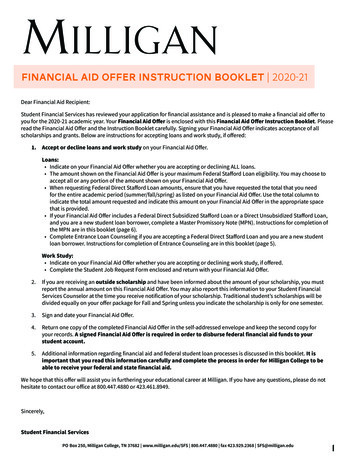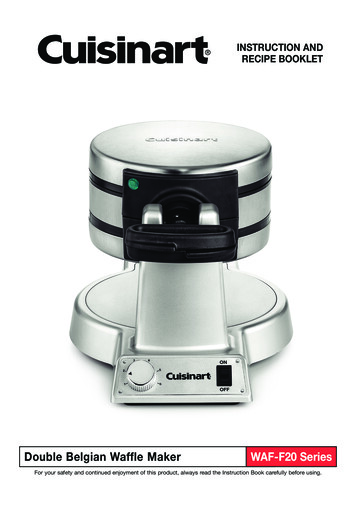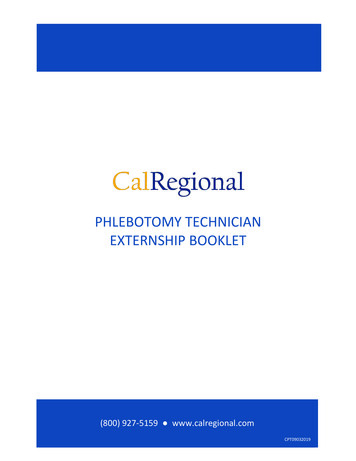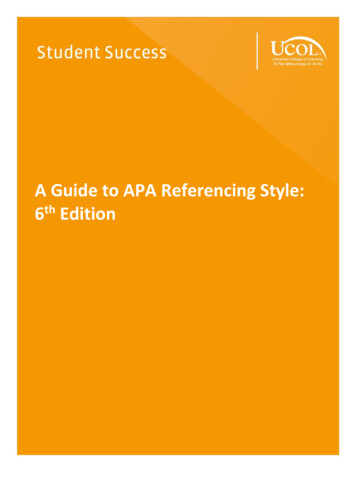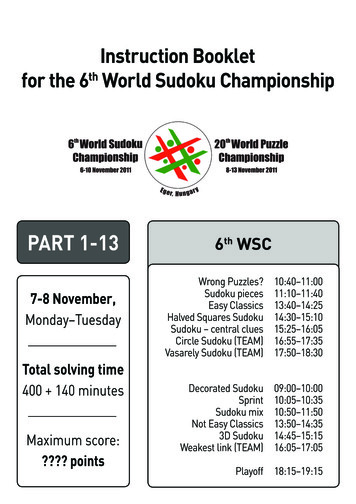
Transcription
Instruction Bookletfor the 6th World Sudoku ChampionshipPART 1-137-8 November,Monday–TuesdayTotal solving time400 140 minutesMaximum score:? points6th WSCWrong Puzzles?Sudoku piecesEasy ClassicsHalved Squares SudokuSudoku – central cluesCircle Sudoku (TEAM)Vasarely Sudoku orated SudokuSprintSudoku mixNot Easy Classics3D SudokuWeakest link –14:3514:45–15:1516:05–17:05Playoff 18:15–19:15
General scoring rules for WSCPartial scores are not generally available forSudoku puzzles, unless explicitly stated otherwise.That is, if a puzzle is marked correct, the full scoreis awarded, otherwise no points are scored.If the Scoring Area is correct but less than 90% ofthe grid is filled, you will get full credit if the judgebelieves that you made an honest attempt to solvethe puzzle and fill the grid sufficiently.Round BonusFor individual and team rounds, a competitor orteam can earn a bonus if they complete all thepuzzles in the round before the time limit. Thecompetitor declares by raising his or her hand to getthe attention of a floor judge, who will write the timeFor the majority of the puzzles, we will be using on the scoring cover sheet. For individual rounds,the Scoring Area concept, as described here. After the full bonus is 5 points for each full minute earlysolving a puzzle, the contestant will copy the two (for example, 50 seconds early would not get anyindicated rows (or the equivalent) of the grid into the bonus). For team rounds, the full bonus is 30 pointsScoring Area at the bottom on the page. Only the for each full minute early. To get the full bonus, allentry in the Scoring Area will be judged for 100% puzzles must be perfectly solved.accuracy. Even if the grid is not completely filled in(at least 90% correct), you will still get full credit for If, in the opinion of the judge, the individual orteam intended to submit a perfect round, but therea correct answer.To get full credit for a puzzle, one of the following is a small number of errors, the round could beconsidered “near-perfect” and the individual ormust be true: The Scoring Area is correct and the grid is filled at team would be awarded 60% of the full bonus. Ingeneral, a round would be near-perfect if eachleast 90% correctly; or The Scoring Area is empty, and the grid is 100% puzzle in the round was at least 95% correct, in theopinion of the judge.correct.Scoring PuzzlesFor some puzzles (especially smaller grids andSprint puzzles), we will not be using the concept of aScoring Area. For these puzzles, 100% accuracy inthe grid is required for points to be awarded.Part 1Wrong Puzzles?Individual partYou will be given a handful of Sudoku puzzlesthat are already solved. Your task is to find out ifthose solutions are correct.For each puzzle, you need to clearly indicatewhether you think the solution is correct orwrong. You should circle one of the signs providednext to each puzzle. There is no need to point outany error in the puzzles you mark wrong.10:40–11:0020 minutes – ? pointsScoring:Correct solution marked correct: 4 pointsWrong solution marked wrong:2 pointsPuzzles without any mark:0 pointsWrong solution marked correct: -2 pointsCorrect solution marked wrong: -4 pointsIf the total score is less than zero, then zeropoints will be awarded (i.e. nobody will finish theround with a negative score).Puzzles will consist of Standard, Diagonal and Amorphous Sudokus, with their sizes ranging between6x6 and 12x12.
Part 2Sudoku pieces11:10–11:4030 minutes – 180 pointsIndividual partThis is a manipulative Sudoku puzzlewhere small pieces with pictures are tobe used instead of numbers. StandardSudoku rules apply. In addition, somepieces are already placed into the puzzlegrid. None of these pieces is at the rightplace. However, for any piece placed intothe puzzle, at least one of its (at most)four edge adjacent neighbour cells mustcontain the same piece in the solution asthe cell itself has in the puzzle grid.E.g. in the sample puzzle, row 2, column 6 of the puzzle grid has a shape similar to a forward slash. Thisimplies that in the solution grid, at least one of the neighbours of the same cell must contain the similar shape.Partial scoring is available in this round, depending on the number of correctly placed pieces: up to 21:0 points, between 22-80: (number of correctly placed pieces - 21) * 3, 81: full score (180 points).Any piece that is placed onto the grid but is incorrect, results in a deduction of 3 points (in other words, thenumber of correctly placed pieces will be reduced by the number of incorrectly placed pieces for the scoringpurposes). If the total score is less than zero, then zero points will be awarded (i.e. nobody will finish the roundwith a negative score).No pencil, eraser or other marker is allowed in this round. Individual name stickers will be provided prior tothis round, competitors are kindly requested to bring it along and use them to label their solution sheets justbefore this round starts.Part 3Easy classics13:40–14:2545 minutes – 580 pointsIndividual partFill in the grid so that each row, column and regioncontains each number between 1-9 exactly once (1-6in the small grids).There will be 6 times 6x6 and 16 times 9x9 tspointspointspointspointspoints
Part 4Halved squares sudoku14:30–15:1040 minutes – 370 pointsIndividual partIn this variation, some cells are halved by one of the diagonals. For any such cell, exactly one of its twohalves shall contain a number. That number is considered to belong to the row and column containing itscell, as well as to the area connected to the half cell the number is in.Using definitions above, standard Amorphous Sudoku rules apply:each row, column and area contains each number exactly once.1412101025405050505580points43 214 1 324 1 3 213 2 art 5Sudoku – central clues15:25–16:0540 minutes – 480 pointsIndividual partIn all these puzzles, beyond standard Sudoku rules,there are some extra rules constraining the cells around the centre of the puzzle.Puzzle 1Sum in the centreStandard Sudoku rules apply. Inaddition, the three highlightedgrey regions (read as multipledigit numbers) need to be filledin such that the sum of the toptwo equals to the third one.40points50points54 6 3 13 445215364542631634 1 52351246426513163425
Puzzle2Only Five in the centreStandard Sudoku rules apply.Additionally, the grey regioncan only contain five differentnumbers. Grey cells belongingto a marked diagonal alsocontain different numbers.sample uses 3 differentnumbers (not 5)40points45150points150pointsPuzzle 5Magic square in the centreStandard Sudoku rules apply.In addition, the highlighted greyarea is a magic square: eachgrey row/column of length5 adds up to 25 and each greyrow/column of length 3 adds upto 15. (In the example:length 3 rows add upto 10, length 2 rowspointsadd up to 7)30362Standard Sudoku rules apply.Additionally, edge connectedgrey cell groups contain a setof consecutive numbers. E.g.a group of five grey cells maycontain 3-4-5-6-7, in any order.points4727Puzzle 4Renban 562pointsStandard Sudoku rules apply.In addition, all numbers, ofany length, that can be readin grey cells (across or down)are primes.Sample uses numbers 1-5, 7.points5145Puzzle3Primes in the centre4032453321415
Puzzle 6Plus-minus in the centreStandard Sudoku rules apply. Additionally, the middle 3x3 region and the grey cells surrounding itform a Plus-minus puzzle. That is, any grey cell above and/or left to the middle box indicates thelargest twofold sum in the row/column/diagonal of that box, while any grey cell below and/or rightto the middle box indicates the largest twofold sum in the row/column/diagonal of that box. If a“largest twofold sum” is shown to be between 1 and 5, add 10 to obtain the true value, i.e. 11-15.A separate grid is shown here to explain the Plus-minus concept. However, no extra grid will beprovided in the competition puzzle. Note that the top right and bottom left cells of the middle 5x5square will not be grey.8715 7 934 27147 871 5 893455points528 19 76875 63 471 - - 8961725861492373196275482475836911112 416 78 283 85 9 41 6425 24 36 13 x5 1 62 4653421Puzzle 7Product in the centreStandard Sudoku rules apply. Inaddition, the three highlightedgrey regions (read as multipledigit numbers) need to be filledin such that the product of thetop two equals to the third one.Numbers in grey cells are alldifferent.40points1564 x25164235412653325146
Part 6Circle sudoku16:55–17:3540 minutes – 1200 pointsTeam partThis round consists of eight Sudoku puzzles (fourclassic and four variations, details below). Thepuzzles are linked as follows.Each puzzle has several grey cells (ignore theirarrows for now), these numbers can be transferredinto another puzzle. Once such a grey cell is filledwith a digit, start from that grey cell and followthe path along the lines into the wheel system.Once arrived at a wheel, start counting the nodesclockwise (also indicated by arrows) around thewheel. Count as many nodes as the digit in thestarting grey cell, then leave the wheel at the nodewhere the counting ends (for larger numbers, thismay need to count around the wheel, e.g. if it has6 nodes and you are carrying an 8, you will make afull round, then two more nodes). Follow that pathagain. If you arrive at another wheel, repeat thesame. If you arrive at a puzzle, there will be anothergrey cell having an arrow. Put the digit you carriedinto the cell this arrow is pointing at. See the figurebelow for a visual explanation.Some of the number transfers may only passthrough a single wheel; some others may visitmore of them.Some of the Sudoku puzzles hvae a uniquesolution even without using transferred clues,other puzzles may require the clues to unfold. Thepuzzles will be easy to recognise as their namesare clearly indicated.Partial scores are available for this round. Eachof the Sudoku puzzles, if solved correctly, will scoreseparately.2.1.43.44.Puzzle 1Hi-Lo Frame SudokuStandard Sudoku rules apply. Additionally,numbers outside the grid denote the sum of thelargest and smallest digits out of the first threeseen in that row/column from that direction.Puzzle 2Masked Product SudokuStandard Sudoku rules apply. Additionally,numbers in circles indicate the product of thedigits surrounding them. Unfortunately, someof the digits in these products are masked. Eachplaceholder in these clues masks a single digit.Product clues cannot start with digit zero.Puzzle 3Easy as 123/789 SudokuStandard Sudoku rules apply. Additionally, digits1-3 and digits 7-9, along with the clues outside,constitute two “Easy as .” puzzles. That is, digits1-3 outside indicate which of them appears firstin that row/column from that direction, and thesame applies for digits 7-9.Puzzle 4Neighbours’ Party SudokuStandard Sudoku rules apply. Additionally,some cells contain the list of digits in theirneighbouring cells (those sharing at leasta corner).
87867785 4 1 3 6 2x81xx2 3 6 5 1 45xx244 6 3 2 5 16x1 5 2 6 4 31x1x23 1 5 4 2 6x06 2 4 1 3 511154 2662282653145375241637752731654273746231723 541522751 6356 532 32964325162464762522577656551712311 3446221335753 1654732723737261455157567653222132
Part 7Vasarely sudoku17:50–18:3040 minutes – 1200 pointsTeam partPlace the given pieces into the diagrams as shown in sample in a way that a regular sudoku puzzleis formed in each diagram. The placement of a piece must be such that its “handle” covers one cell fromthe central region of the main grid, while its “plate” must cover one of the outer regions. Pieces can berotated, but not reflected. Solve the sudoku puzzles.Partial scores are available, in case single puzzles are solved correctly and that correct solution is a partof the solution of the entire 35126164235256314
Part 8Decorated Sudoku09:00–10:0060 minutes – 635 pointsIndividual partPuzzle 1 – KropkiStandardSudokurulesapply. All edge adjacentcells containing digits withdifference 1 are markedwith a white circle. All edgeadjacent grid cells with oneof the digits being twice theother are marked with ablack circle. Neighbouringcells containing 1 and 2 maybe marked with either a whitecircle or a black one.All available circles are given.40pointsPuzzle 2 – XXV SudokuStandard Sudoku rules apply.Adjacent cells totalling 10 or 5are marked with X and V on theedge they share, respectively.Additionally, four cells around avertex totalling 10 are markedwith X on the corner they share. Allavailable Xand V cluespointspointsare given.4070V70X5VV1X2VXVXVVXPuzzle 3Square Numbers SudokuStandard Sudoku rules apply. Alltwo or three digits square numberthat can be read across or down aremarked. A list of available squarenumbers is attached (i.e. thosewithout zero and digit repetition).16, 25, 36, 64,256, 324,pointspoints361, 625.325265 100 51643253 5 61V4X2 6 5 4V1X5 1 6 2V 33V 2 1 54XX6 5 4 3V 2V3V 2 1 6X 6142653361542253461534216615324426135
40Puzzle 4 – Rossini SudokupointsStandard Sudoku rules apply.The arrows indicate that the nearest three digits in the row (column) are inascending or descending order (increasing towards the direction the arrow ispointing towards).If there is no arrow outside a row/column, the nearest 3 digits therein cannotbe in either ascending or descending order.3 5654593848284651576492 oints683547912136892745457613298298475136Puzzle 5Triangle Sums SudokuStandard Sudoku rules apply. A cell that equals to the sum of two of its diagonally touching neighbours is markedwith a grey right triangle, with its legs facing towards the two neighbours.Whenever a cell contains two such triangles, the resulting grey square is shown. In this case, it is part of thepuzzle to figure out which are the triangles that made up for that square.All available triangles (and squares) are 6523632451
Part 9Sprint10:05–10:3530 minutes – 360 pointsIndividual partIn this sprint round therewill be:6 pieces of 6x6 classic6 pieces of 9x9 classic3 pieces of 9x9 diagonally3 pieces of Amorphoussudokus (6x6 and art 10Sudoku mix10:50–11:5060 minutes – 940 pointsIndividual partPuzzle 1 – Sudoku 10-20-30Standard Sudoku rules apply. Additionally, the sum of any grey region equalsto 10, 20 or 30.786271 1124679835
Puzzle 2Sudoku – odd/even regionsStandard Sudoku rules apply.Additionally, any three horizontally,vertically or diagonally consecutivecells containing digits of identicalparity (i.e. all three odds or allthree evens) are marked with agrey line.15points5632142251pointsPuzzle 3Sudoku wordsearchStandard Sudoku rules apply. Inaddition, the “words” given canbe read in the puzzle in one ofthe eight directions (horizontally,vertically or diagonally).“Words” in the example:664, 2222, 3254.654353pointsPuzzle 4 – Tetris SudokuFill some cells with digits1 through 5 (1 through 3 in theexample) so that each row, columnand region contains each of themexactly once. In every region, thecells that remain empty need to beconnected.25points403331Standard Sudoku rules apply. In addition,cells along any grey stripe need tobe palindrome. That is, the sequenceof numbers along the strip must 354165323214656523411632545341262456132 3 11 2 33 1 231 231 2pointsPuzzle 5 – Palindrome Sudoku4615232 3 1113126541323241143223144123
Puzzle 6 – Alternating stripes15Standard Sudoku rules apply.Additionally, “large” and “small”numbers alternate along the greystripes. A “large” number is largerthan its two neighbours, while “small”numbers are smaller than theirs.Whether the numbers in the startingor ending cells are “small” or “large”is not specified.Puzzle 7 – TripodFill the grid with digits 1-6 anddivide the grid into some regions,so that each digit appears exactlyonce in every row, column andregion. All points where threelines meet are given. There are nopoints where four lines 64354612Standard Sudoku rules apply. Additionally, the eight cells around any colouredcell are strictly increasing around it, with starting point and directionunspecified.4 23 7 613665 4 89 24613556124343256161532425Puzzle 8 – Increasing points834159267912867345
Puzzle 9 – False SudokuStandard Sudoku rules apply. Each row/column/region contains digits 1-N (N is the length of theside) exactly once. All given clues are wrong.2025points40points413331pointsPuzzle 10 – No touch Sudoku546 244 8 69341427798 5 38 81523782763941545Standard Sudoku rules apply.Cells with the same digits do not touch, not even 26318276594Puzzle 11 – Sick kropkiFill in the grid with digits from 1 through 9 so that no digit repeats in any row, column or region. If thepuzzle only has N rows where N is less than 9, then only N different digits can be used.All edge adjacent cells containing digitswith difference 1 are marked with a whitepointscircle. All edge adjacent grid cells withone of the digits being twice the other aremarked with a black circle. Neighbouringcells containing 1 and 2 may be markedwith either a white circle or a black one.pointsAll available circles are given.10208824340Puzzle 12 – Diagonal sums62314Standard Sudoku rules apply.Additionally,numbersgivenoutside equal to the sum of digitsin the given 412384612
1 3 2 43 12 4 Standard Sudoku rules apply. If twoblocks have a comparison sign betweenthem, it must be satisfied by the twothree-digit numbers that the blockscontain.In the example puzzle, comparisons aremade on two-digit numbers.4 2 1 33 14 2 652points Puzzle 13 – Three-digit sums65Puzzle 14 – Quad MaxStandard Sudoku rules apply. Arrows point to the largest digit in the four neighbouringcells. Digits may repeat around an arrow, but the largest digit is unique.7 136191 98769543532614897365 256 9Puzzle 15Small zones SudokuFill in the grid with digits 1 through4 (1 through 3 in the sample) sothat each digit appears in each row,column and bold region exactlyonce. There is exactly one numberin each of the dotted regions. If sucha zone has a number indicated,that number has to appear in thatzone (but not known which cell).Dotted regions may cross boldones (although this is not the casein the sample nts1 331 1 23 2131 2 23 1233 122211232
Part 11Not easy classics13:50–14:3545 minutes – 590 pointsIndividual partFill in the grid so that each row, column and region contains each number between 1-9 exactly ointspointspointsPart 123D SudokuIndividual part14:45–15:1530 minutes – 140 pointsIn this round, you will solve an Amorphous Sudoku on a cube that can be taken apart into separate pieces.As demonstrated by the sample puzzle, there is a cube with side 4, with one of its side 2 sub-cubes beingremovable. If the small cube is in place, the surface of the large cube forms an Amorphous Sudokupuzzle: rows are planar sections of the cube, along any of the three cardinal directions, with regions alsodefined on the surface. If the small cube is removed, the remainder still forms an Amorphous Sudoku,it’s similarly the planar sections of the resulting object that count as rows. The small cube itself does notcontain a valid Sudoku.The actual puzzle will be solved on a cube made of hard paper. The size of the puzzle will be of side 4. Oneof the side 3 sub-cubes will come off, from which in turn a side 2 sub-cube will come off. This results inthree different Sudoku puzzles: one which is on the cube of side 4, one which is on the big cube with a side2 cube taken off, and one which is on the big cube with a side 3 cube taken off.Partial scores available: every correctly filled digit is worth 2 points. Every wrong digit filled in is worth-1 points.
788625117785864172127633486588 5 1 7 4 1 561257427 3821461323 41486375 7526 82763348658582 7 1 51 34 6574 62 1 1 3 814743221486375 7526 87412427 3613 4
Part 13Weakest link16:05–17:0560 minutes – 1200 pointsTeam partTeam PuzzleRelation Sudoku QuadrupletEach small puzzle is an ordinary Sudoku of size 8 (4 in the example). Comparison signs indicate whichcell is larger or smaller.The four small puzzles are linked:- for puzzles in the same ROW, numbers in the same position in these puzzles must be of different parity.E.g. if the top left puzzle has an odd number (1, 3 etc.) in a given cell, then the cell in the same position inthe top right puzzle must be even (2, 4 etc.).- for puzzles in the same COLUMN, numbers in the same position in these puzzles must satisfy theconstraint that if one of them is “small”, i.e. between 1-4 (1-2 in the example), then the other one must be“large”, i.e. between 5-8 (3-4 in the example). E.g. if the top left puzzle has a 1 in a given cell, then the cellin the same position in the bottom left puzzle must be “large”.Upon completing the individual puzzles, competitors will receive a sheet containing one of the smallpuzzles, to be solved together at the team table. The order will be: top left, top right, bottom right, bottomleft. The arrows that link thepuzzles together will veryclearly help in identifying thesmall puzzles.The first small puzzle isuniquely solvable on its own,so are puzzles 1-2 and 1-2-3together.Individual PuzzleRelation SudokuStandard Sudoku rules apply.Comparison signs indicatewhich cell is larger or smaller.Puzzle sizes will vary between6 and 9.General rules: All puzzlesneed to be completed toadvance to the team table.1324121234341324
241334132413241423231431424231Part 13 1PlayoffIndividual partThe top ten competitors will advance to the playoffthat will contain nine puzzles. Puzzlers will receivesome time advantages based on their ranking duringthe two days of competition.Trying to provide a good mixture of puzzles for thefinals, in particular balancing between classic andvariation Sudokus, there will be three different kindsof puzzles all along the final session.The ten puzzlers start solving their puzzles at tencolumns of tables, each of them set up to be movingahead along a column, similarly to a relay. Uponsolving a puzzle, a competitor can move one tableahead where the next puzzle awaits them. However,the fourth row of tables only contain seven tables,so the last three puzzlers to get past three puzzlescorrectly will be eliminated at that stage. Similarly,after three more puzzles, the number of tablesshrinks again, from seven to five. Finally, the lastthree puzzles on the last three rows of tables willdecide on ranking between the top five.18:15–19:1560 minutes – xxx pointsAt all times, a marker will be sitting next to eachpuzzler, immediately checking each puzzle. Afterfinishing a puzzle, the paper should be handedover to the marker who marks it. This will take aminute, regardless of the puzzle and whether itwas solved correctly. Once the minute is up, thepuzzle is returned to the solver. If it was wrong,they have to start solving it again (or correcting it),the process of marking it again will be the same. Ifit was correct, the puzzler can immediately move tothe next table.The three different styles will be: Classic Sudoku,Sudoku Central Clues and one of the variations tobe specified later. We are confident that such a goodlevel of designed diversity will allow all finalists tohave a good challenge for the title race and that wewill see an exciting Final!More information will be given shortly before theevent.
Sudoku puzzles, unless explicitly stated otherwise. That is, if a puzzle is marked correct, the full score is awarded, otherwise no points are scored. Scoring Puzzles For some puzzles (especially smaller grids and Sprint puzzles), we will not be using the concept of a Scoring A




